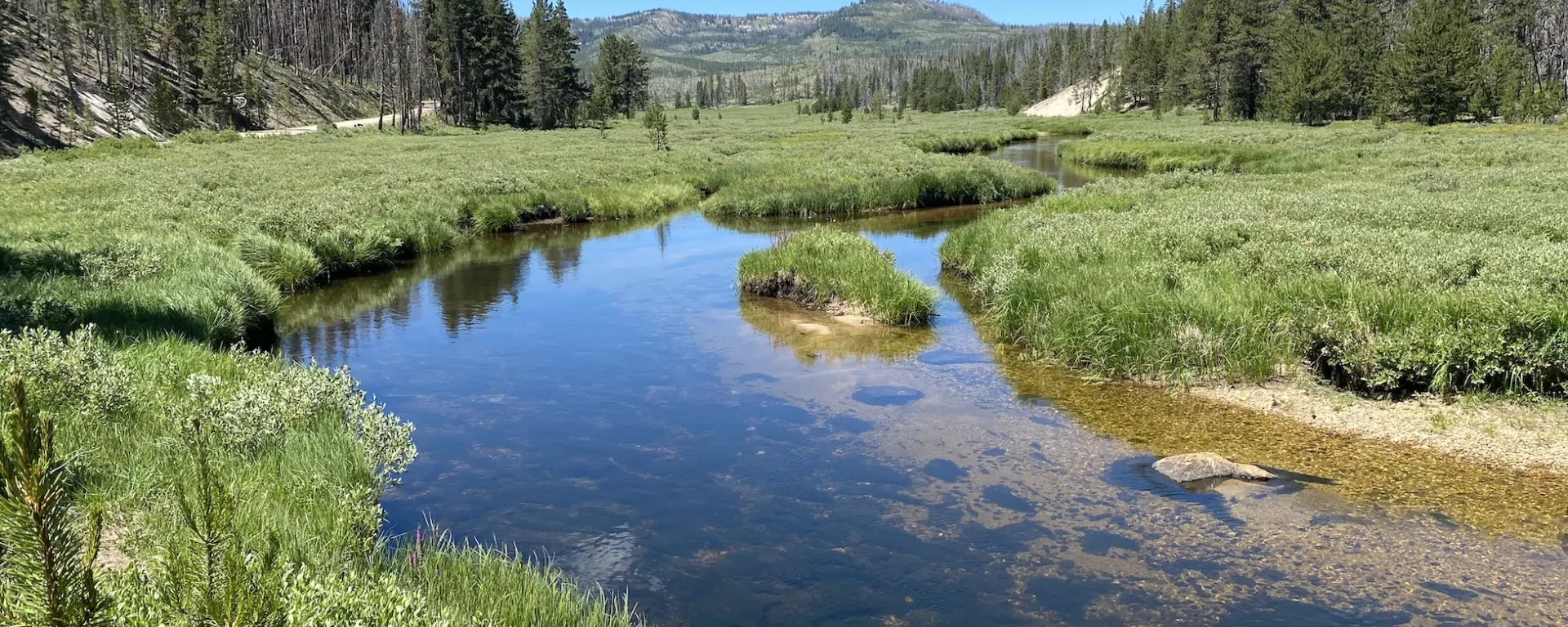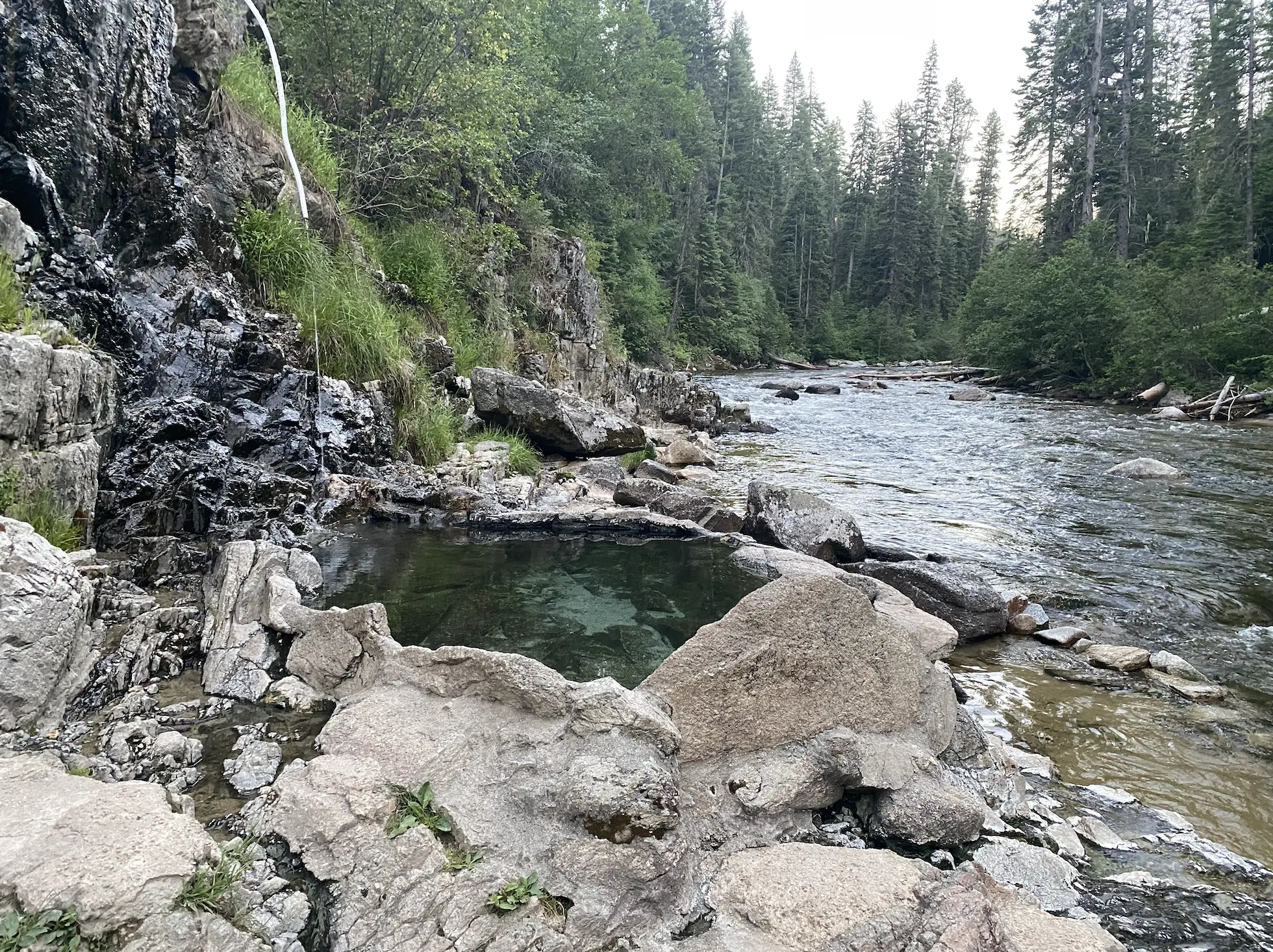
Words and images by Kira Minehart.
Perspectives on Climate Change and the Rides we Love
Perhaps you’ve heard of the Idaho Hot Springs bikepacking loop. It’s a multi-day bikepacking trip that weaves along gold-medal trout streams, flower-dotted meadows, self-made towns, and of course, hot springs. Unfortunately, the season for enjoying this route is getting much shorter and riskier due to climate change.
In June 2021, the Pacific Northwest experienced a record breaking heat wave — just in time for my bikepacking trip along the Idaho Hot Springs route on my Otso Cycles Waheela C. Before departing, the owner of the one-stop-shop in Lowman, Idaho warned that temperatures would soar above 100 degrees for the next week. My riding partner and I decided to forge ahead anyway, confident that a dip in the multitude of streams would keep us cool.

After one hour of riding, my partner and I realized this was not the trip we had planned for. Typically, average June temperatures in Lowman, Idaho hover around 75 degrees Fahrenheit – not 105, as it were. In these conditions, the heat was visible and the air still as songbirds stayed perched in the shade of Pinus Ponderosa. This historic heat wave catalyzed many surprises along our route; all of which were consequences of the beast called climate change.
The least concerning among them was our ill-prepared gear. The thin plastic bag of Winco chocolate-covered cranberries in my partner’s frame bag immediately turned into a goopy hazard that threatened to destroy whatever clean and organized equipment we had. Secondly, I never needed my down puffy jacket affixed to my fork mounts; instead, it served as an insulating pad to keep my rear from roasting whenever I took a roadside snack break. Finally, a lightweight swimsuit seemed like a good idea for the “family-oriented” hot springs, but it was hardly used as we only stopped at two of twenty hot springs along our route. The warm baths were hardly appealing; instead, they felt like a menace in dialogue with the scorching sky.
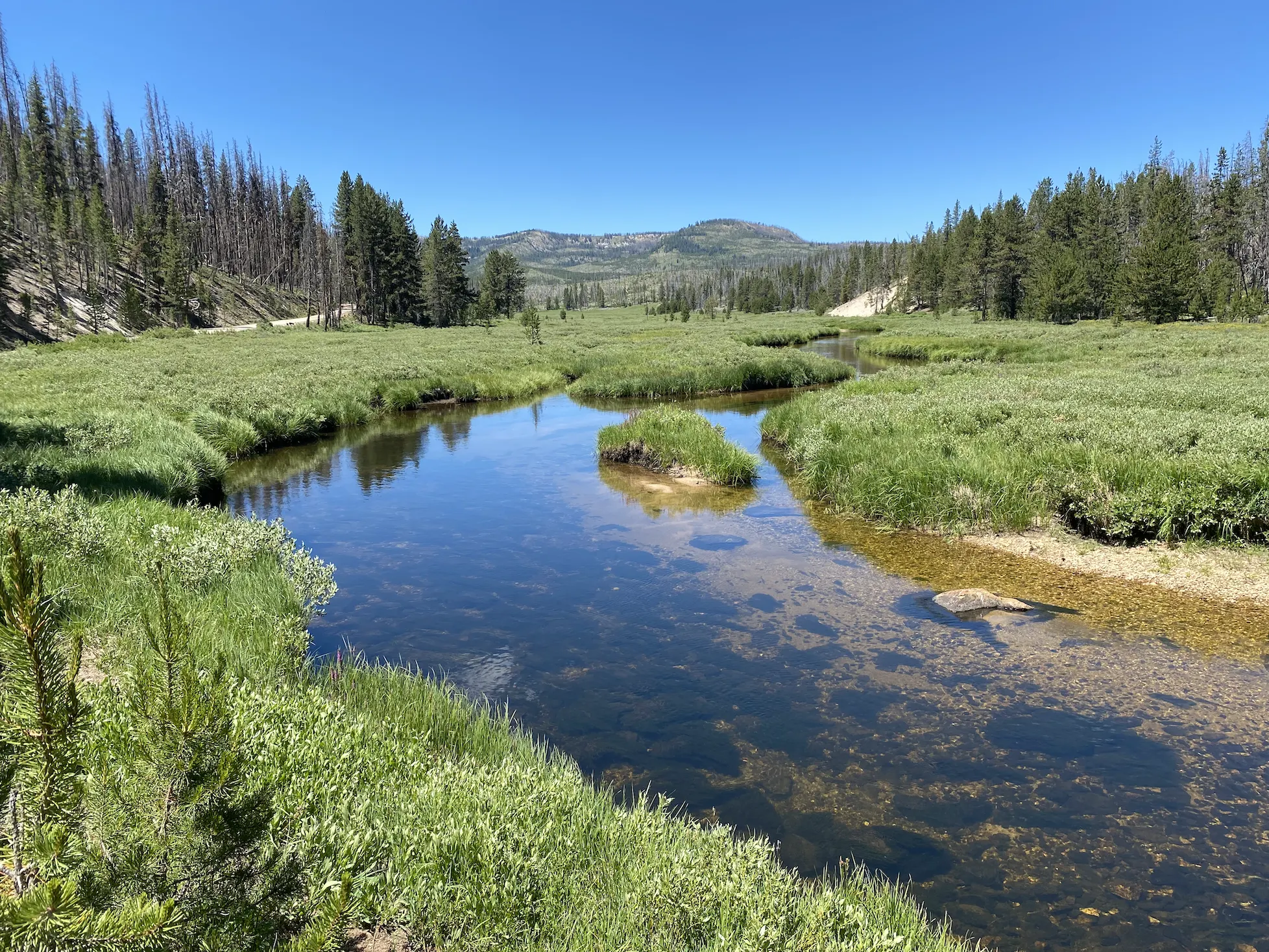
Perhaps a bit more unnerving was that no amount of water could keep me satiated — I yearned for more than a liter of water per hour and it seemed there weren’t enough electrolytes in all of Idaho to keep me thinking straight. We were not prepared for many of the higher-elevation streams (above 6,000 feet) to be dry or nearly there, likely due to the unprecedented heat and lack of precipitation. Unfortunately, yet another heat wave graced this area only a few weeks after our trip; certainly sapping whatever water was left in these fragile streams.
The most alarming surprise was the proximity to and threat of wildfire. At the time, there were no active fires on our route; they would start a few days after we’d finished (and continue throughout the summer.) However, the omnipresent nature of wildland fire was all around us. A nearly 100-mile stretch of gravel roads in Boise National Forest was entirely burnt and no longer resembled the “green” forested land cover suggested by Google Maps. These vast expanses of blistered timber provided no shade and made for contemplative, if dangerous, bikepacking.
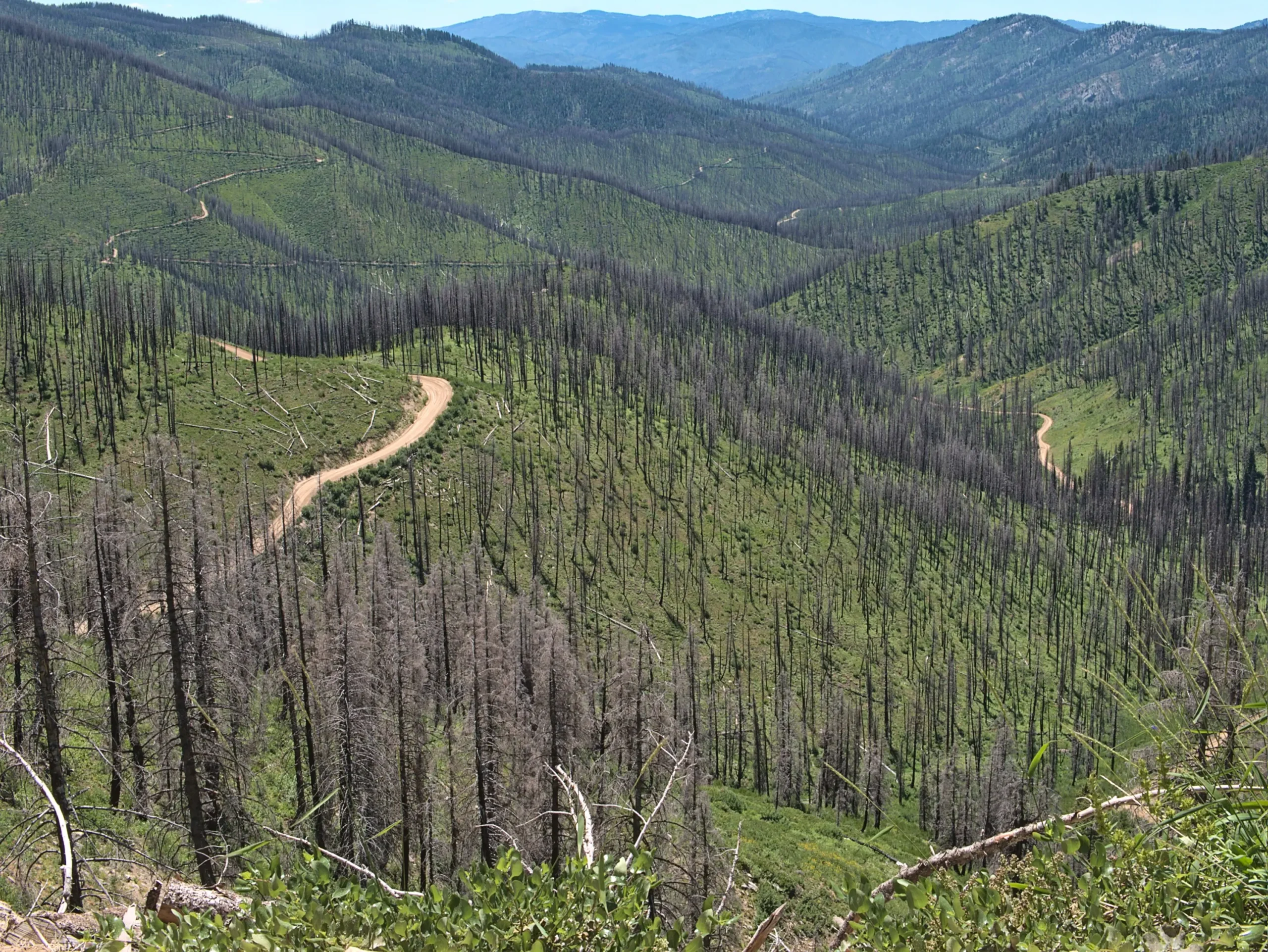
Ultimately, we made it through the route with many laughs and musings. We affectionately referred to the experience as the Idaho Cold Springs adventure as our days were characterized by fully-kitted river baths — not serene hot spring soaks. Although I’ll hold onto many happy memories from this week in Idaho, more salient are the lessons I learned about being a bikepacker; or hiker, boater, birdwatcher, and camper in the era of climate change.
Heat waves like this one will not seem novel in decades to come. Not only will global average temperatures continue to rise as carbon dioxide is emitted into the atmosphere, but extreme events such as this will become more common according to expert scientists on the Intergovernmental Panel on Climate Change. Extreme weather events, in addition to gradual warming and ecological shifts will yield more fire closures and evacuations, damaged roads and trails, and increasingly dangerous conditions for all pursuers of outdoor recreation.
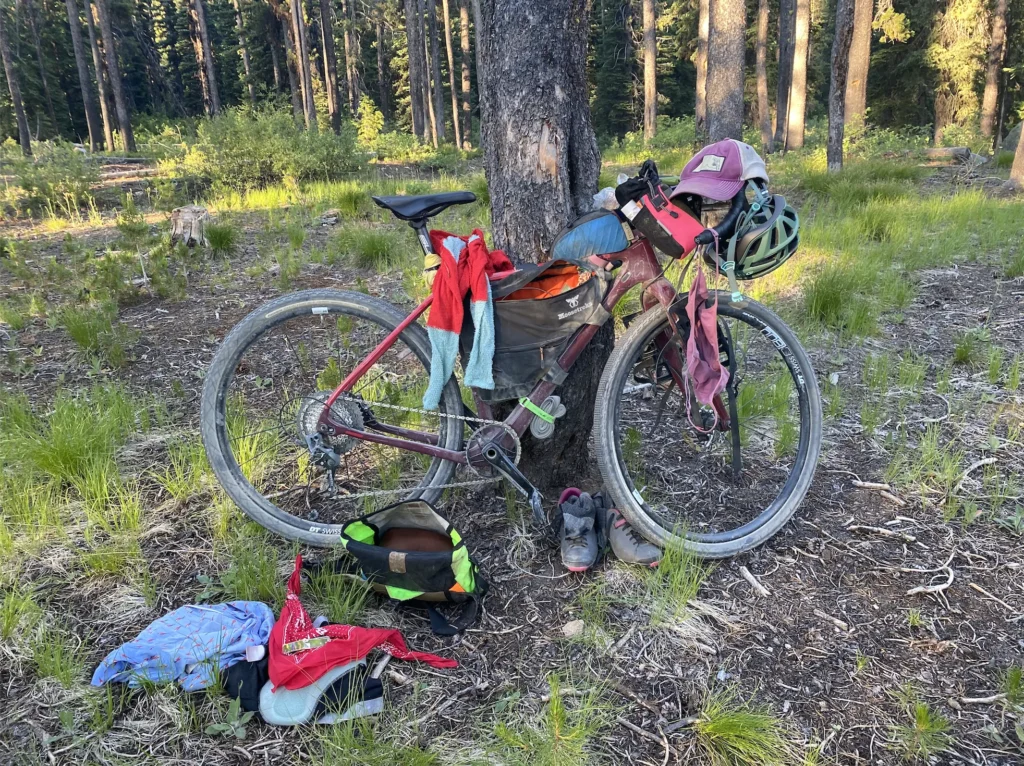
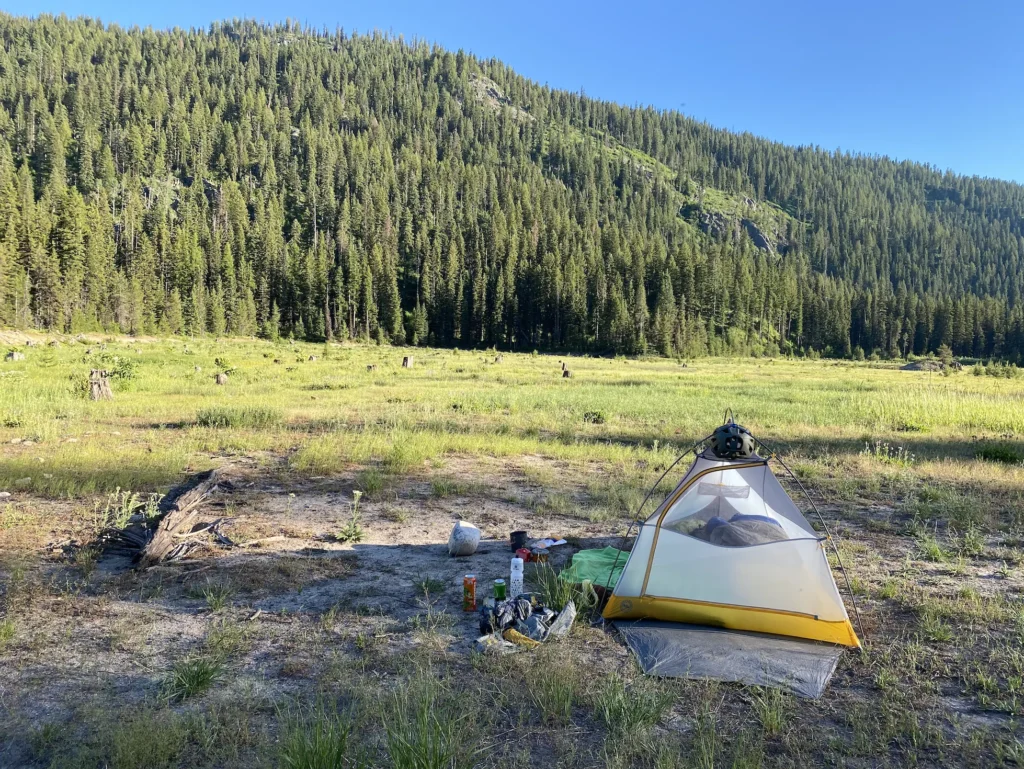
This is the hot world we inherited. It is also the world we choose to create. Until we have global, progressive, and thoughtful action on carbon emissions, land-use change, food systems, environmental justice, and more — this is the world that will remain.
“Take precautions if you spend time outside,” stated the National Weather Service during June’s historic heat wave. Perhaps the best precaution we can take right now is to vote, trust science, and enjoy summer bike rides while we still can.
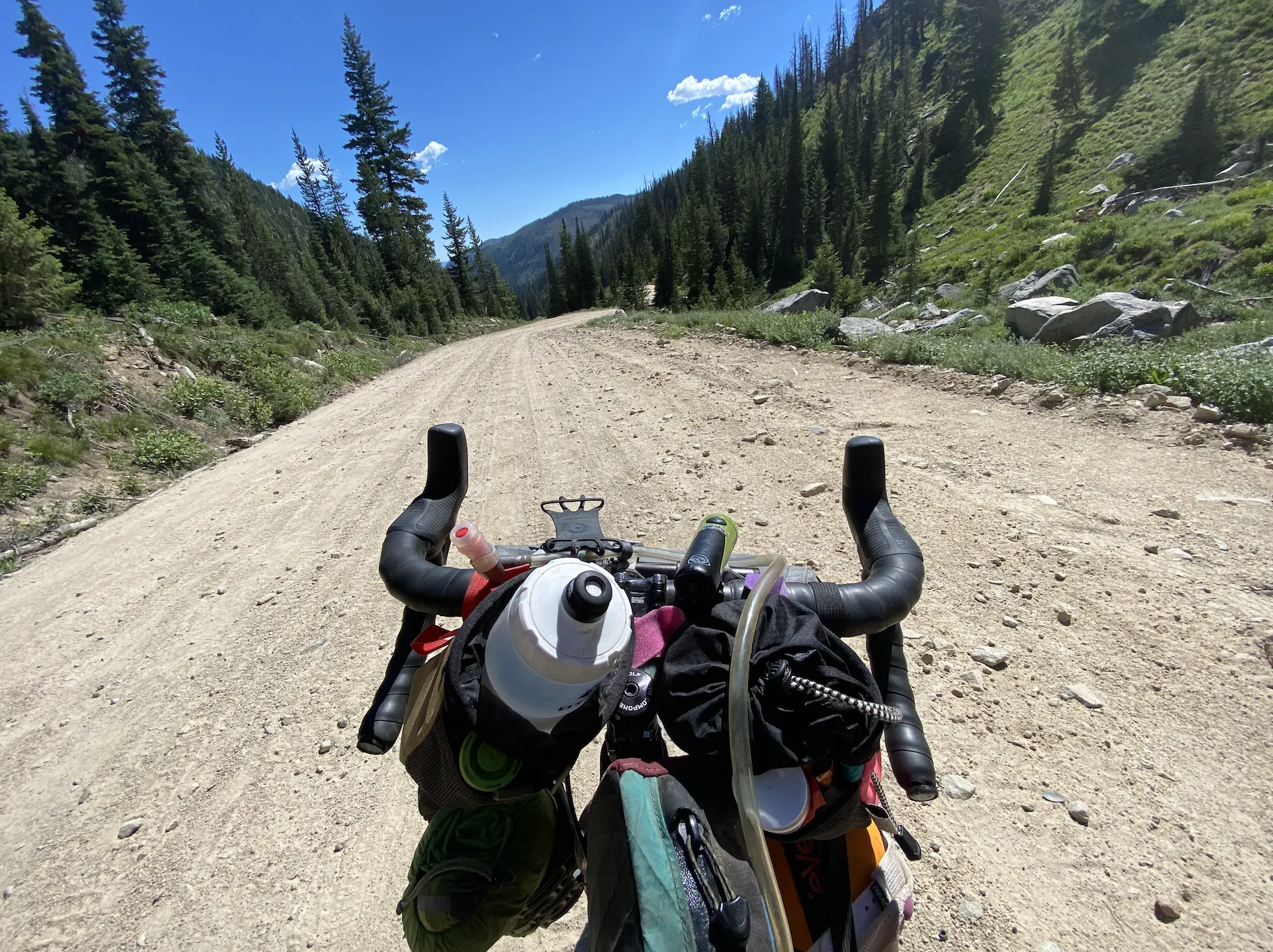

The Waheela C can fit 700c x 35mm tires when the roads are tacky and tidy, 700c x 42mm when there’s a bit more uncertainty, 700c x 54mm when the gravel road turns to ATV trails, and anything in between. Whether you’re bikepacking on the dirt roads of the Idaho Hot Springs or the packed limestone of Southeast Minnesota, the Waheela C is ready for your next adventure.




